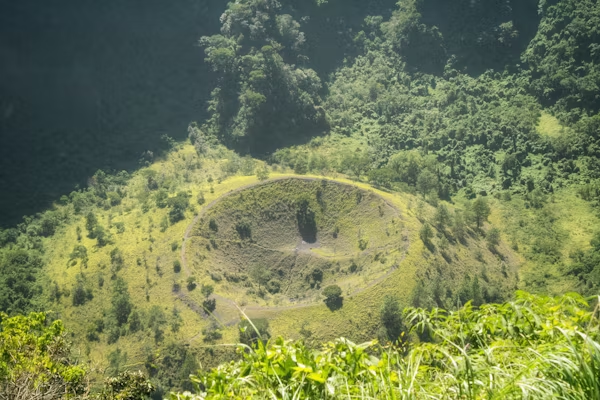Nestled quietly amid China’s sprawling landscapes lies Anheihe, a place that many have yet to explore but one that offers a rich tapestry of history, culture, and scenic beauty. While it may not be a household name internationally, Anheihe carries a unique charm that captures the hearts of those who seek something off the beaten path. This article invites you on a journey through the fascinating world of Anheihe, revealing its ancient traditions, natural wonders, and modern-day vitality. Whether you are a history buff, an adventurous traveler, or simply curious, understanding Anheihe promises a rewarding experience that connects past and present in remarkable ways.
The Origins of Anheihe: Tracing Its Historical Roots
Anheihe’s story begins long ago, rooted deeply in the historical shifts and cultural developments of the region it belongs to. Archaeological evidence and local legends suggest that this area has been inhabited for centuries, with its people preserving customs that reflect a blend of indigenous and external influences. Over time, Anheihe became more than just a geographical spot; it evolved into a symbol of resilience and cultural pride. The layers of its history are visible in ancient artifacts, traditional architecture, and the oral stories passed down through generations, making it a valuable resource for historians interested in China’s regional development.
Geographical Setting: Where Nature and Culture Meet
The physical environment of Anheihe adds a vital dimension to its identity. Situated in an area where rivers flow gently through valleys and hills rise gracefully in the distance, the natural landscape shapes the way of life here. The climate is typically moderate, supporting diverse flora and fauna that contribute to both the ecological richness and the cultural traditions linked to the land. This harmonious relationship between people and nature has helped maintain Anheihe’s distinctive atmosphere — a peaceful coexistence that inspires both locals and visitors alike.
Cultural Significance: Traditions That Define Anheihe
The heart of Anheihe lies in its people and their customs. Traditional festivals, music, dance, and crafts remain integral to the community, offering a vivid window into the values and beliefs cherished by residents. Celebrations often revolve around agricultural cycles, ancestral worship, and seasonal changes, reflecting a deep respect for nature and heritage. Local artisans continue to practice age-old crafts, from intricate embroidery to pottery, ensuring that these skills are not lost to modernization. Experiencing Anheihe’s cultural life means stepping into a world where past and present coexist dynamically.
Architectural Heritage: Exploring Anheihe’s Built Environment
Walking through Anheih’e, one encounters buildings that tell stories beyond their walls. The architecture showcases traditional Chinese styles adapted to the local climate and materials, with wooden houses, stone bridges, and temples standing as testaments to skilled craftsmanship. Many structures have been preserved or restored to maintain their historical appearance, offering visitors a tangible connection to the past. These architectural gems not only serve religious or residential purposes but also act as community centers, strengthening social bonds and preserving collective memory.
Anheihe’s Natural Attractions: A Haven for Nature Lovers
Beyond its cultural treasures, Anheihe boasts stunning natural landscapes that beckon travelers looking for tranquility and outdoor adventure. The surrounding forests, rivers, and hills provide excellent opportunities for hiking, birdwatching, and photography. Seasonal changes paint the scenery with vivid colors, from blossoming flowers in spring to golden leaves in autumn, creating postcard-worthy views at every turn. Nature in Anheihe is not only beautiful but also plays an essential role in local traditions, with many natural sites considered sacred or spiritually significant.
Economic Development: Balancing Tradition and Progress
While Anheihe remains rooted in tradition, it has gradually embraced modern development to improve the quality of life for its residents. Local industries focus on sustainable agriculture, small-scale tourism, and handicrafts, all of which highlight Anheihe’s unique character. The community carefully balances economic growth with environmental protection, striving to avoid the pitfalls of overdevelopment seen in other regions. This approach ensures that Anheihe can offer visitors authentic experiences without sacrificing its natural and cultural heritage.
Tourism in Anheihe: What to Expect
Tourism in Anheihe is still emerging, making it an ideal destination for travelers who prefer less crowded places. Visitors can enjoy guided tours through historic sites, cultural workshops, and nature excursions that introduce them to the area’s many facets. Hospitality here is warm and personal, often involving family-run guesthouses and home-cooked meals that showcase regional flavors. Unlike commercialized tourist hotspots, Anheihe invites guests to slow down, absorb the surroundings, and connect deeply with the local way of life.
Challenges Facing Anheihe: Preserving a Delicate Balance
Like many small cultural hubs, Anheihe faces challenges related to modernization, environmental pressures, and population shifts. Young people often move to bigger cities for education and jobs, which threatens the continuity of traditional practices. Meanwhile, increased tourism, if not managed properly, risks harming the natural environment and diluting cultural authenticity. Local authorities and communities are aware of these risks and actively seek solutions that protect Anheihe’s unique identity while allowing it to thrive in the 21st century.
The Future of Anheihe: Hope and Potential
Looking ahead, Anheihe holds promising potential as a model for sustainable rural development. By leveraging its cultural and natural assets thoughtfully, it can attract respectful tourism and investment that benefit both residents and visitors. Educational initiatives aimed at younger generations encourage them to value their heritage and consider future opportunities at home. With continued care and creativity, Anheihe could become a shining example of how small communities maintain their spirit amid global change.
How to Get to Anheihe: Travel Tips
Reaching Anheihe requires some planning since it is not yet a mainstream travel destination. The closest major city offers rail and bus connections, from where smaller local transport options can be used. Travelers are advised to check schedules carefully and consider hiring local guides who can provide valuable insights and help navigate the area. Seasonal weather should also be taken into account when planning visits, as certain months offer better access and more comfortable conditions.
Local Cuisine: Taste the Flavors of Anheihe
No visit to Anheihe would be complete without sampling its unique culinary offerings. Local dishes often emphasize fresh ingredients sourced from nearby farms and rivers, reflecting the region’s agricultural roots. Traditional recipes have been passed down through families, featuring hearty soups, savory snacks, and sweet treats that delight the palate. Food in Anheihe is not just sustenance but a celebration of community and culture, inviting visitors to savor the region’s identity bite by bite.
Community Life: A Glimpse into Daily Living
The daily rhythms of Anheihe’s residents reveal a community grounded in cooperation and respect for tradition. Farming, crafting, and communal gatherings shape life here, creating a supportive environment where everyone plays a role. Visitors who spend time with locals often comment on the warmth and openness they encounter, making Anheihe feel less like a destination and more like a home away from home. This strong sense of belonging is perhaps the most enduring quality of Anheihe’s charm.
Conclusion
Anheihe is more than just a place on a map—it is a vibrant blend of history, culture, nature, and community that offers something truly special. From its deep historical roots to its present-day vitality, Anheihe invites exploration and appreciation on many levels. For those willing to venture beyond the usual tourist trails, it promises rich discoveries, meaningful encounters, and unforgettable memories. As it navigates the challenges of modern life, Anheihe stands as a testament to the power of preserving heritage while embracing the future.
Frequently Asked Questions About Anheihe
What is Anheihe best known for?
Anheihe is known for its rich cultural heritage, traditional crafts, and beautiful natural scenery.
Is Anheihe easy to visit for tourists?
It’s not a major tourist hotspot, but with some planning, travelers can explore its attractions comfortably.
What kind of climate does Anheihe have?
Anheihe generally experiences a moderate climate, suitable for year-round visits with seasonal highlights.
Are there any festivals unique to Anheihe?
Yes, the community celebrates local festivals tied to agriculture and ancestral traditions.
Can visitors experience local food in Anheihe?
Absolutely, the region offers traditional dishes made from fresh local ingredients.
Is Anheihe suitable for nature lovers?
Yes, the area is rich in natural beauty with forests, rivers, and hiking opportunities.











